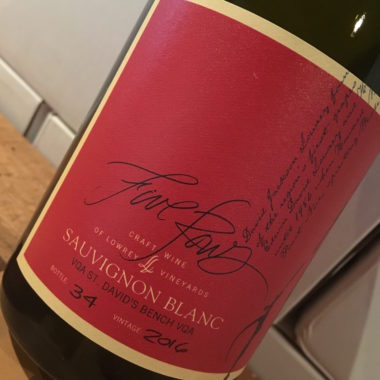
2024 Sauvignon Blanc
“The Infinite Variability of Terroir”
One day, while inspecting the hundreds of new replants in our Sauvignon Blanc vineyards, I was struck by the vast number of variables that are at play behind the creation of any wine. As I peeked into the grow tubes, one by one, to check on the status of these struggling little sticks in the ground, I couldn’t help but be awed by the evolving and tangled web of life that is a vineyard.
When you really think about all of these variables on a micro level (berry cells, leaf chlorophyll, root growth, soil micronutrients and the intensity of radiation on August 21st at 2pm – just to name a few) it can make your head spin. It’s a wonder that any two wines ever show any similarity whatsoever!
Enter the winemaker. They have the tools to mold a wine into a certain style through their choice of barrels, yeast, nutrients and malolactic bacteria. Alternatively, they may choose to let the anomalies of each vintage shine through by minimal intervention. This latter approach is my preference, adding even more layers to the seemingly infinite variability of terroir.
The vintage of 2024 may one day be celebrated as one for the ages. That is much easier to proclaim now, of course, than during the vintage itself. Contemplating all the things that have to go right for a successful harvest is far more enjoyable after the fact than during the ordeal. Unlike other standout vintages where the eventual outcome was more obvious early on, 2024 had its share of extreme precipitation events that left our fields flooded in a way we had never experienced before. The prevailing thought at the time was that the excess precipitation would have a negative effect on fruit quality. Much like 2023, however, the crop was saved by perfect ripening conditions in August and September.
I’m not sure if birds would be classified as part of the terroir, but they certainly played a part in thinning the Sauvignon Blanc crop this vintage, especially in the northernmost section of the block. This was yet another anomaly that we had never encountered with this varietal in that specific part of the vineyard. You may sense a theme here.
The fruit for this wine was harvested from both of our Sauvignon Blanc vineyards on September 11th, with ripening parameters of 20.8 ºBrix, TA 7.35 and pH 3.32. After pressing, the juice was fermented in a combination of mostly neutral French oak barrels (85%) and tank (15%). The fermentations were managed to be as slow and cool as possible for maximum aromatic and flavour potential. Along the way, the wine picked up pronounced citrus and herbaceous notes, subtle tropicality and hints of lemongrass.
The terroir is strong here, both in its familiar hallmarks and vintage specific nuances.



